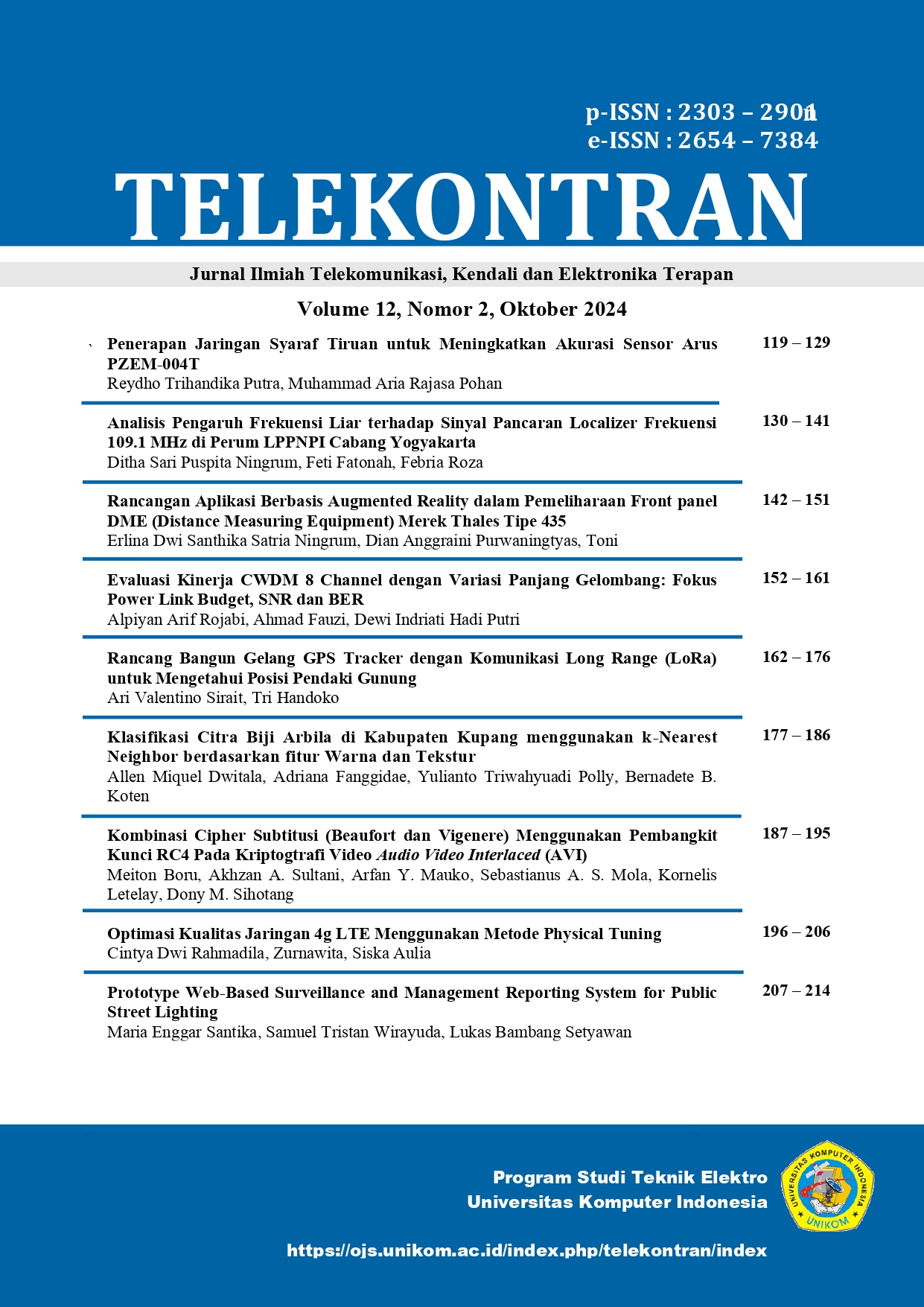Classification of Arbila Seed Images in Kupang Regency using k-Nearest Neighbor based on Color and Texture features
Main Article Content
Abstract
Arbila (Phaseolus lunatus L.) is a type of food legume belonging to the Fabaceae (Leguminosae) family. Arbila can be categorized into two groups: those that are safe for human and animal consumption, and those that are not consumable due to their hazardous cyanide acid concentrations. Variants of Arbila seeds exhibit similarities in color and texture, which can lead to misidentification during manual sorting by the community. Therefore, there is a need for the development of a system that can assist the public in identifying different types of Arbila seeds. This study utilizes three color features based on the HSV (Hue, Saturation, and Value) model and four texture characteristics based on the GLCM (Gray Level Co-Occurrence Matrix) model as input parameters for classifying Arbila seed types. The applied method is k-NN (k-Nearest Neighbor). A total of 600 image data points were collected from 10 different types of Arbila seeds. Experiments were conducted with various k values in the k-NN method, specifically k values of 1, 3, 5, 7, and 9, while also applying the K-Fold Cross-Validation method with 10 folds to assess the system's performance. The results indicate that the maximum average accuracy achieved is 89.33% at k = 1, while the lowest average accuracy recorded is 79.33% at k = 9.
Downloads
Article Details
Section

This work is licensed under a Creative Commons Attribution-ShareAlike 4.0 International license.
